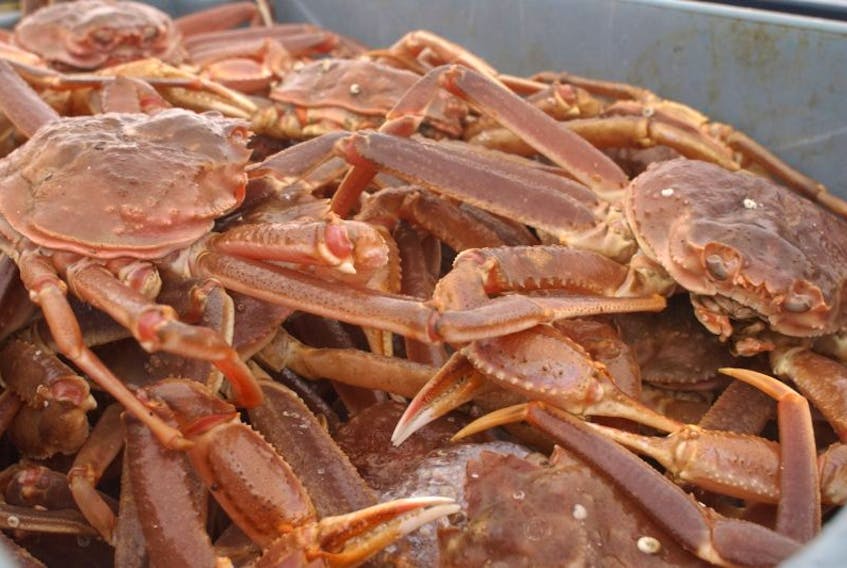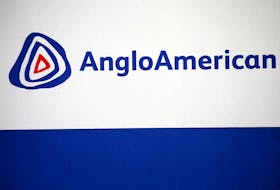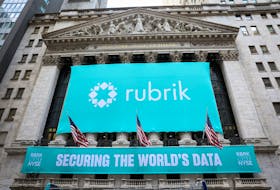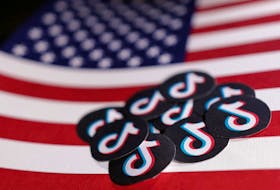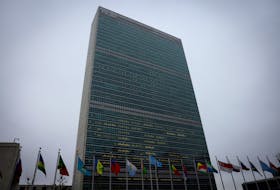While the announced increase in price between the province’s harvesters and processors this year appears to have somewhat offset concerns about a drastic drop in Newfoundland snow crab quotas, key Japanese buyers remain uncertain about paying a high price through the season.
The minimum price per pound for snow crab this year for harvesters was set at $4.39 — the highest price ever in this province — by the Standing Fish Price Setting Panel, which chose the harvesters’ proposed price over the processors’ offer of $4.10.
John Sackton, a longtime North American seafood market analyst and president and publisher of SeafoodNews.com, said Japanese buyers find themselves in an uneasy situation. He said their normal buying process — in which the buyers like to work on a single-established price — has been disrupted.
“In past years, normally, one or two companies would make contracts — and from the Newfoundland packers’ point of view they would try to get the highest price possible and from the Japanese traders’ point of view they would resist that, but they would agree on a price and then once a couple of the major players said ‘yes, we’ll agree on this price,’ then everybody else would fall in line,” Sackton said. “And then that price generally remained in effect, and didn’t change much.”
That normal buying process, however, has since fallen overboard — first in 2016 with the loss of the Quinlan Brothers plant in Bay de Verde due to fire, and again this year with the drastic reduction in Newfoundland snow crab quotas and a huge increase in Southern Gulf of St. Lawrence snow crab quotas.
Sackton noted that after the Quinlan plant was lost, Japanese buyers who had contracts with the plant had to scramble to find a new supply of snow crab and were willing to pay higher prices.
“It was like a game of musical chairs,” Sackton said. “The Japanese who had bought into their contracts with that plant all of a sudden had to go elsewhere, so that disrupted everybody. Instead of having an agreed price, it became, ‘let’s see what the highest price is that they will take,’ so that pushed the prices up. The initial contracts last year (with processors) started somewhere around $5.65 (per pound) and by the end of the period of Japanese purchasing they were buying it at as much as $6.50.”
This year, Sackton said, the Japanese buyers are feeling a different pressure with the lower production and cutbacks in the supply of snow crab in Newfoundland, and the higher expected production in the gulf region.
Processors in the gulf region usually sell to U.S. buyers, while Newfoundland usually sells to both Japanese and U.S. buyers. However, with the increased gulf quotas, there’s more snow crab available for Japanese buyers to go after at possible lower prices, which, in turn, could drive Newfoundland snow crab prices down.
“That is really colouring the situation and makes it very difficult in Newfoundland. In Newfoundland you have a reduction and the harvesters are expecting that because they are landing less crab, it should be worth more at the dock and should be a corresponding increase in harvester prices,” Sackton said. “But in the gulf you have almost the opposite. The volume of landing crab is so large it is potentially going to affect the market and give buyers an alternative at lower prices.”
The Department of Fisheries and Oceans cut the total allowable catch (TAC) for snow crab in Newfoundland waters this year by 22 per cent to about 35,419 tonnes. In the gulf, the TAC rose to 43,822 tonnes from 21,758 tonnes in 2016 — the first time it ever rose above Newfoundland TAC levels.
Sackton said he’s never seen a year in which the gulf produced more snow crab than Newfoundland. He said while Japanese buyers may pay the high price for Newfoundland snow crab for the first couple of weeks when Newfoundland harvesters are the only ones landing crab, things could change when the gulf fishery starts.
“This is a record-high price for snow crab. I’ve never seen in the market prices as high as they are this winter,” Sackton said. “And at the same time it’s a record increase of snow crab in the gulf, in New Brunswick, and we’ve never seen the gulf land more snow crab than Newfoundland. So, those two things are contradictions from a commodity analyst standpoint and it’s very hard to justify record-high prices when you have increases in overall quantities.”
At the Boston Seafood Show last month, one Newfoundland processor announced it had a contract with Japanese buyers for a price of $6.95 per pound, but that’s for a limited volume, noted Sackton. That doesn’t mean all the Japanese buyers will fall in line with that price, he said.
“The pressures are that there are packers in Newfoundland who are pushing the Japanese to get as high a price as possible, significantly higher than the $6.95 that was announced in Boston,” he said. “But pressure on the Japanese side is that they see the additional crab supplies in the U.S. market, and regardless whether they are going to buy crab from the gulf or Newfoundland, they see the overall market and they think it’s overpriced, so they are reluctant to commit to the higher prices being asked because they are nervous about what might happen in a few weeks, and so that tension is what has created this uncertainty.
“There is a real disconnect, so for the first couple of weeks Newfoundland is the only game in town because the gulf hasn’t really opened up yet and there are buyers who are out of crab and need it and will pay the higher price. But once the volume starts coming the market dynamic is going to shift.
“I’ve seen it in past years where the Newfoundland prices have been set higher than what the market will actually pay. And those are the years where processors lose a lot of money because they buy the raw material at a high price and they have high costs and their buyers won’t accept it, so instead of the price being at its lowest point at the end of May, beginning of June, which is kind of normal because that’s when you have the biggest landings, the price continues to decline in July, August and September. That means that anybody who purchases crab initially loses money.”

